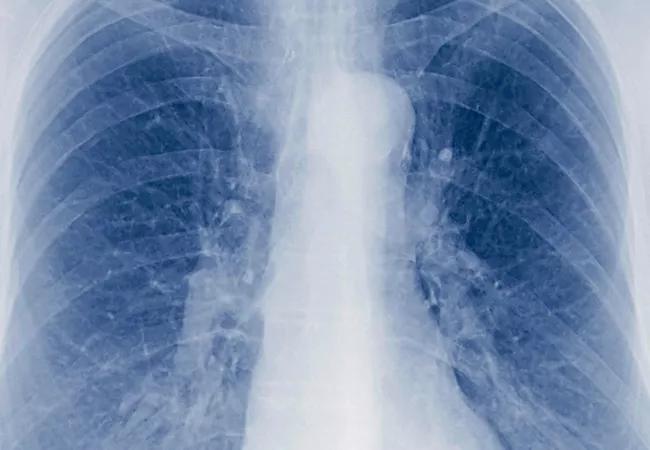When is EBUS-TBNA staging necessary?

By Francisco A. Almeida, MD, MS
Advertisement
Cleveland Clinic is a non-profit academic medical center. Advertising on our site helps support our mission. We do not endorse non-Cleveland Clinic products or services. Policy
Determining the nodal status of patients with non-small cell lung cancer (NSCLC) without metastatic disease is crucial for defining the treatment plan. When mediastinal staging is indicated, the American College of Chest Physicians (ACCP) lung cancer guidelines recommend a needle-based technique as the initial procedure of choice. Cleveland Clinic is one of the highest volume centers for endobronchial ultrasound-transbronchial needle aspiration (EBUS-TBNA) procedures in the nation with over 1,000 cases per year. In keeping with the ACCP guidelines, this is our preferred procedure for the diagnosis and staging of suspected or confirmed lung cancer that appears to be limited to the chest. While the indication to perform EBUS staging of the mediastinum is well established in certain situations based on current evidence (e.g., clinical N1-N3 disease based on CT alone or PET-CT findings), it may not be necessary in situations where the likelihood of N2 or N3 disease is very low.
In order to address ongoing uncertainties about the indications for EBUS staging, we sought to develop a model to predict the probability of finding N2 or N3 disease with EBUS. In conjunction with investigators from three other major U.S. hospitals, we performed a multicenter retrospective cohort study of consecutive patient undergoing EBUS-TBNA staging for NSCLC. Patients with recurrent NSCLC stage 4 disease, suspected or confirmed synchronous primaries, T4 tumors with direct mediastinal invasion, and those with small-cell lung cancer were excluded. A total of 1,533 patients with radiographic stage T1-3, N0-3, M0 disease who underwent staging EBUS-TBNA, and for whom PET scans were available, were included in the analysis. The primary analysis was performed on 633 patients and the external validations on 722 patients.
Advertisement
Younger age, location of the primary tumor within the central one third of the hemithorax, adenocarcinoma histology and higher nodal stage by CT and PET were associated with an increased probability of N2 or N3 disease on EBUS-TBNA. The area under the receiver operating characteristic (ROC) curve was 0.85 (95% CI, 0.82-0.89) for the primary analysis cohort and 0.88 (95% confidence interval, 0.85-0.91) for the external validation cohort.
In addition to determining the probability of finding N2 or N3 disease on EBUS-TBNA the model is also able to predict the presence of mediastinal disease when EBUS-TBNA nodal sampling is negative. Thus, the model is useful not only in determining which patients should undergo staging EBUS-TBNA but also which patients with negative EBUS-TBNA should go on to mediastinoscopy. For example, the probability of a false negative EBUS in a 70-year-old patient with a peripheral squamous cell carcinoma and radiographic stage 2 disease is sufficiently low to argue against a mediastinoscopy before definitive surgical resection or radiation therapy.
Our prediction model appears to perform better compared to existing models published to date to estimate mediastinal nodal involvement in patients with NSCLC. We believe the model will be very useful to both physicians and patients in developing an appropriate strategy for mediastinal staging.
Dr. Almeida is staff in the Department of Pulmonary Medicine.
Advertisement
Advertisement

Care paths and research initiatives aim to answer unmet clinical needs

Study shows high rate of hematologic responses, low rate of disease progression

Bispecific antibody bridging therapy deepens durability of BCMA CAR T-cell therapy without overlapping toxicities in patients with relapsed/refractory multiple myeloma

Phase 2 study brings pivotal advances in treatment efficacy and safety for the most challenging-to-treat population

Patient with quadruple refractory multiple myeloma achieves complete response with cell therapy

Distinct baseline immune profiles can predict response and resistance to different types of CAR-T cells.

National Blood Clot Alliance collaborates with faith-based organizations on first-of-its-kind church bus tour

AI-driven tools can streamline enrollment and improve efficiency across clinical trials.